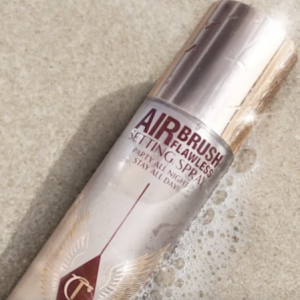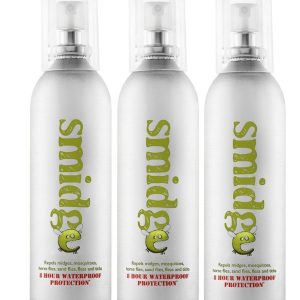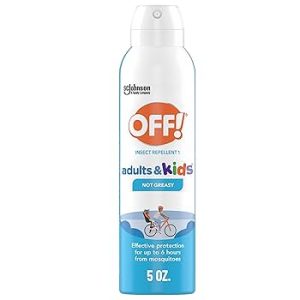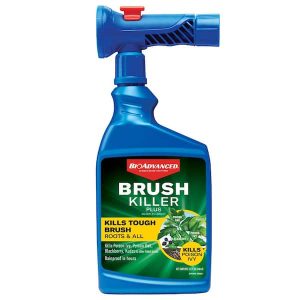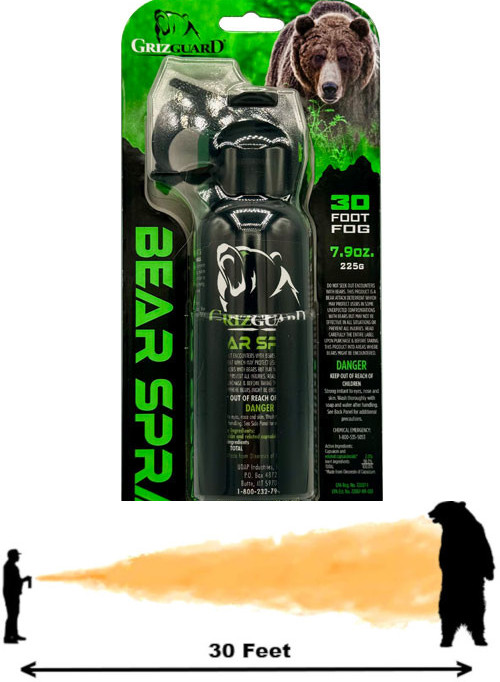
When it comes to personal protection and outdoor safety, understanding the difference between pepper spray vs bear mace is crucial for making an informed decision. Both are oleoresin capsicum (OC) based defensive sprays, but they serve different purposes and have distinct characteristics that make each suitable for specific situations. This comprehensive guide will explore every aspect of these defensive tools to help you choose the right protection for your needs.
What Is Pepper Spray? Understanding Human-Grade Defense Systems
Pepper spray is a non-lethal self-defense weapon designed primarily for protection against human attackers. It contains oleoresin capsicum (OC), a chemical compound derived from hot peppers that causes immediate incapacitation when it contacts the eyes, nose, or mouth. The active ingredient creates intense burning sensations, temporary blindness, difficulty breathing, and disorientation in attackers.
Most pepper sprays designed for human defense contain 2-18% oleoresin capsicum concentration, with the majority falling between 10-15%. The lower concentration is specifically formulated to be effective against humans while minimizing the risk of permanent damage. These devices typically have a range of 6-12 feet and can discharge for 3-10 seconds depending on the size and model.
The delivery system for human pepper spray comes in various forms including stream, cone, gel, and foam patterns. Stream patterns offer the longest range and are less affected by wind, while cone patterns provide wider coverage area. Gel formulations stick to the target better and reduce cross-contamination risks, making them popular for indoor use.
Bear Mace Explained: Maximum Strength Wildlife Defense
Bear mace, also known as bear spray, represents the maximum strength formulation of oleoresin capsicum allowed for civilian use. Unlike regular pepper spray, bear mace is specifically engineered to stop large, aggressive wildlife including bears, mountain lions, and other dangerous animals. The fundamental difference lies in its potency and delivery system.
Bear spray typically contains 1-2% oleoresin capsicum concentration, which might seem lower than human pepper spray, but the key difference is in the volume and delivery method. Bear mace creates a wide fog pattern that extends 20-30 feet from the user, creating a barrier between the person and the approaching animal. This wide coverage is essential because bears move quickly and unpredictably.
The canister size for bear spray is significantly larger than human pepper spray, typically containing 7.9-10.2 ounces of formula compared to the 0.5-4 ounces found in personal defense sprays. This larger volume ensures sustained discharge time of 6-9 seconds, giving users multiple opportunities to deter an aggressive bear even if the first application isn’t perfectly aimed.
Key Differences: Pepper Spray vs Bear Mace Comparison
Concentration and Potency
| Feature | Pepper Spray | Bear Mace |
|---|---|---|
| OC Concentration | 2-18% (typically 10-15%) | 1-2% |
| Capsaicin Content | 0.18-1.33% | 1-2% |
| SHU Rating | 2-5.3 million | 2-3.3 million |
| Volume | 0.5-4 oz | 7.9-10.2 oz |
The higher capsaicin content in bear spray creates more intense effects despite the lower OC percentage. Capsaicin is the specific compound that causes the burning sensation, and bear spray is formulated to maximize this active ingredient.
Range and Coverage Patterns
Human pepper spray focuses on precision with targeted streams or narrow cones reaching 6-12 feet. This design allows for accurate deployment against specific human attackers while minimizing collateral exposure to bystanders.
Bear mace prioritizes area coverage over precision, creating a wide fog pattern extending 20-30 feet. This broad coverage accounts for the size, speed, and unpredictable movement patterns of large wildlife. The fog pattern also helps ensure contact even if the user’s aim isn’t perfect during a high-stress encounter.
Deployment Duration and Capacity
Regular pepper spray typically provides 3-10 seconds of discharge time, which is usually sufficient for human encounters where the goal is to create an opportunity to escape. The smaller canister size makes these devices highly portable for everyday carry.
Bear spray offers 6-9 seconds of continuous discharge, crucial for wildlife encounters that may require multiple applications or sustained deterrent effects. The larger capacity also accounts for the possibility of multiple animal encounters during extended outdoor activities.
Legal Considerations: Pepper Spray vs Bear Mace Regulations
Understanding the legal landscape surrounding pepper spray vs bear mace is essential before purchasing or carrying either device. Regulations vary significantly by location and can affect everything from possession to usage.
Federal Regulations
The Environmental Protection Agency (EPA) regulates bear spray as a pesticide under the Federal Insecticide, Fungicide, and Rodenticide Act. All bear sprays must be EPA-registered and clearly labeled for use against bears and other wildlife. Human pepper sprays fall under different regulatory frameworks and aren’t subject to EPA pesticide registration.
State and Local Laws
State regulations for pepper spray vary dramatically across the United States. Some states like New York and Massachusetts have strict restrictions on concentration levels, canister sizes, and purchase requirements. California limits the size to 2.5 ounces and requires specific labeling, while states like Texas have minimal restrictions.
Bear mace regulations are generally more permissive since they’re designed for wildlife protection rather than human confrontation. However, some jurisdictions prohibit carrying bear spray in urban areas or restrict its use to designated wilderness areas.
Travel Restrictions
Both pepper spray and bear mace are prohibited in carry-on luggage by the Transportation Security Administration (TSA). They may be packed in checked luggage under specific conditions, but many airlines have additional restrictions. International travel with these devices often requires special permits or is completely prohibited.
Effectiveness Analysis: Real-World Performance Data
Human Defense Effectiveness
Studies conducted by the Department of Justice show that pepper spray is effective in 85-90% of human confrontations when properly deployed. The success rate depends heavily on factors including wind conditions, accuracy of deployment, and the determination of the attacker.
Case studies from law enforcement agencies demonstrate that pepper spray provides an average 5-15 minutes of incapacitation, sufficient time for victims to escape and seek help. However, effectiveness can be reduced by factors such as:
- Alcohol or drug intoxication in attackers
- Extreme emotional states that increase pain tolerance
- Protective clothing or eyewear
- Environmental conditions like strong winds
Bear Deterrent Success Rates
Research conducted by the Alaska Science Center and Yellowstone National Park provides compelling data on bear spray effectiveness. In documented encounters:
- Bear spray stopped aggressive behavior in 92% of cases
- No injuries occurred to humans in 98% of proper deployments
- Bears showed no long-term behavioral changes or habitat avoidance
Dr. Tom Smith’s landmark study published in the Journal of Wildlife Management analyzed 83 bear spray incidents and found that in 98% of cases, bears ceased aggressive behavior after exposure to bear spray. Importantly, the study found no fatalities in properly deployed bear spray encounters, compared to a 17% fatality rate in defensive gun use against bears.
Practical Applications: When to Choose Each Option
Urban and Suburban Self-Defense
For personal protection in populated areas, standard pepper spray is the appropriate choice. Its targeted delivery system minimizes the risk of affecting bystanders, and the smaller size makes it practical for everyday carry. Key scenarios include:
- Walking alone at night in urban environments
- Jogging or exercising in parks or residential areas
- Campus safety for students and faculty
- Professional security applications
The precision of human pepper spray allows users to target specific attackers while maintaining awareness of their surroundings and potential escape routes.
Wilderness and Outdoor Activities
Bear mace becomes essential when venturing into areas with potential wildlife encounters. The National Park Service strongly recommends bear spray for all backcountry activities in bear habitat. Appropriate situations include:
- Hiking and backpacking in national parks and wilderness areas
- Camping in bear country
- Hunting and fishing in remote locations
- Trail running and mountain biking in wildlife areas
The wide coverage pattern and extended range of bear spray provide crucial advantages when facing large, fast-moving wildlife that may approach from unexpected angles.
Safety Considerations and Proper Usage
Training and Preparation
Regardless of which option you choose in the pepper spray vs bear mace debate, proper training is essential for effective use. Both devices require practice to deploy correctly under stress.
Practice recommendations include:
- Purchase training units with inert spray for practice
- Familiarize yourself with the safety mechanism and activation process
- Practice drawing the device quickly from its carrying position
- Understand wind direction and environmental factors
- Learn proper stance and aiming techniques
Storage and Maintenance
Both pepper spray and bear mace have expiration dates typically ranging from 2-4 years from manufacture. The propellant and active ingredients degrade over time, reducing effectiveness. Regular inspection should check for:
- Expiration dates on the canister
- Physical damage to the nozzle or safety mechanism
- Proper pressure by weighing the canister
- Clear nozzle free from obstructions
Storage conditions significantly affect longevity. Both devices should be kept in temperature-controlled environments away from extreme heat or cold, which can affect propellant performance and active ingredient stability.
Cost Analysis: Investment in Personal Safety
Initial Purchase Costs
The price difference between pepper spray vs bear mace reflects their different manufacturing requirements and target markets:
Human pepper spray typically costs $10-40 depending on size, brand, and features. Basic models provide adequate protection, while premium options may include UV marking dyes, improved grip designs, or specialized delivery systems.
Bear mace generally ranges from $35-60 due to the larger canister size, specialized formulation, and EPA registration requirements. While more expensive initially, the extended range and proven effectiveness in wildlife encounters justify the higher cost for outdoor enthusiasts.
Long-term Value Considerations
When evaluating costs, consider the replacement frequency and peace of mind value. Both devices require periodic replacement even if unused, making them ongoing safety investments rather than one-time purchases.
Insurance and liability factors also play a role. Some wilderness insurance policies offer discounts for carrying bear spray, recognizing its proven effectiveness in preventing expensive medical evacuations and liability claims.
Expert Recommendations: Making the Right Choice
Professional Insights
Law enforcement professionals consistently recommend human pepper spray for personal protection in populated areas. The precision and portability make it an ideal less-lethal option for civilian self-defense.
Wildlife biologists and park rangers universally endorse bear spray for wilderness activities. The Interagency Grizzly Bear Committee and National Park Service official recommendations specifically mention bear spray as the most effective non-lethal bear deterrent available.
Dual-Carry Considerations
Some outdoor professionals carry both types of defensive sprays, using human pepper spray for potential human threats and bear mace for wildlife encounters. This approach provides optimal protection but requires additional training to avoid confusion during high-stress situations.
Conclusion: Your Safety Decision in Pepper Spray vs Bear Mace
The choice between pepper spray vs bear mace ultimately depends on your specific needs, environment, and risk assessment. For urban personal protection, standard pepper spray offers the right balance of effectiveness, portability, and legal compliance. For wilderness activities in bear country, bear mace provides unmatched protection against wildlife threats.
Remember that no defensive tool is 100% effective, and the best protection comes from combining proper equipment with situational awareness, training, and smart decision-making. Whether you choose pepper spray or bear mace, invest in quality products from reputable manufacturers and commit to regular training and maintenance.
Your safety is worth the investment in proper defensive tools and the knowledge to use them effectively. Don’t wait until you need protection to make this important decision.
Take Action: Choose Your Protection Today
Ready to make an informed decision about pepper spray vs bear mace ? Assess your specific needs, research local regulations, and invest in quality defensive tools that match your lifestyle and risk profile.
Don’t compromise on safety – choose the right protection and get the training you need to use it effectively. Your personal security and peace of mind depend on making the right choice between pepper spray vs bear mace for your unique situation.
